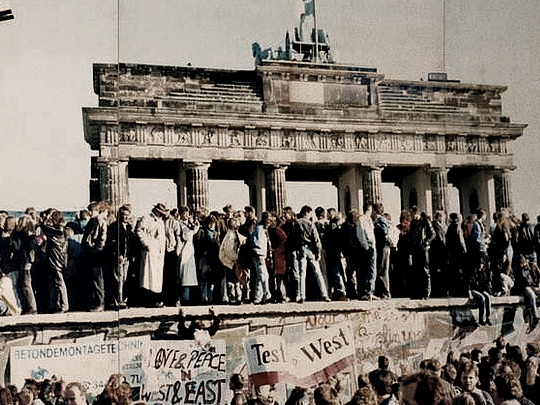Wikimedia Commons / CC-BY-SA-3.0 / GFDL
1 – The Fall of the Berlin Wall
The Berlin Wall was a concrete barrier that both physically and ideologically divided Berlin from 1961 to 1989.
Beginning on 13 August 1961, the Wall cut off West Berlin from virtually all of surrounding East Germany and East Berlin until government officials opened it in November 1989.
The Eastern Bloc portrayed the Wall as protecting its population from fascists conspiring to prevent the building of a socialist state in East Germany, while the Mayor of West Berlin, Willy Brandt, referred to it as the “Wall of Shame”.
The wall came to symbolize the so-called “Iron Curtain” that separated Western Europe and the Eastern Bloc during the Cold War.
Prior to the wall being built, up to 3.5 million East Germans defected, with many crossing over from East Berlin into West Berlin.
Between 1961 and 1989, it is estimated over 100,000 people attempted to escape from East Germany, with over 5,000 people succeeding in escaping over the Wall. It is thought more than 200 people died in their escape attempts.
In 1989, a series of revolutions in Eastern Bloc countries resulted in civil unrest in East Germany, culminating with the East German government allowing its’ citizens to enter West Berlin on 9 November 1989.
Throngs of East Germans crossed and climbed onto the Wall in celebration, joined by West Germans from the other side.
Over the following weeks, Berliners and souvenir hunters chipped away at the Wall, before official demolition began on 13 June 1990, finishing in 1992.
The fall of the Berlin Wall paved the way for German reunification, which formally took place on 3 October 1990.
2 – The Tiananmen Square Massacre
The Tiananmen Square massacre, known in China as the June Fourth Incident, was a student-led demonstration in Beijing in 1989.
Set against a backdrop of rapid economic development and social changes in post-Mao Zedong China, the protests reflected anxieties about the one-party political system, inflation, and the country’s future.
Among varying goals, protesters called for democracy, accountability, freedom of the press, and freedom of speech. At the height of the protests, about 1 million people assembled in the Square.
By May, a student-led hunger strike galvanized support for the demonstrators around the country, with protests spreading to over 400 cities. Ultimately, China’s Communist Party believed the protests to be a political threat and resolved to use force.
On May 20, the State Council declared martial law and mobilized up to 300,000 troops to Beijing, leading to mass civil unrest in the following days.
Troops with assault rifles and tanks fired at the demonstrators trying to block the military’s advance towards Tiananmen Square.
The number of civilian deaths was internally estimated by the Chinese government to be above 10,000, with 40,000 injured.
The international community and human rights organizations condemned the Chinese government for the massacre.
The Chinese government made widespread arrests, expelled foreign journalists, strictly controlled coverage in the domestic press, strengthened the police, and purged officials who appeared sympathetic to the protests.
The protests set the limits on political expression in China well into the 21st century. It remains one of the most sensitive and widely censored political topics in mainland China.
3 – The Exxon’s Valdez Oil Spill Off Alaska
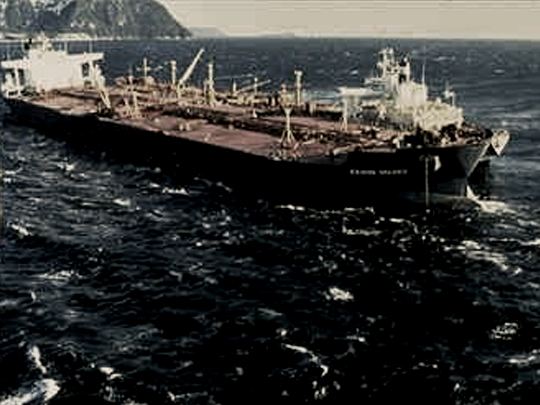
The Exxon Valdez oil spill occurred in Prince William Sound, Alaska, shortly after midnight on 24 March 1989.
The oil tanker struck Bligh Reef, 1.5 miles west of Tatitlek, Alaska, when bound for Long Beach, California.
Almost 11 million US gallons of crude oil spilled off the Alaskan coast over the next few days. It is considered one of the most devastating human-caused environmental disasters of all time.
The Valdez spill is the second largest in US waters, after the 2010 Deepwater Horizon oil spill. Prince William Sound’s remote location, accessible only by helicopter, plane, or boat, made response efforts difficult.
The region is a habitat for salmon, sea otters, seals, and seabirds, of which hundreds of thousands were killed.
The oil eventually covered 1,300 miles of coastline and over 11,000 square miles of ocean.
According to official reports, the ship was carrying 53 million US gallons of oil, of which about 10.8 million US gallons were lost.
Exxon paid about $2 billion in cleanup costs and $1.8 billion for habitat restoration and personal damages related to the spill.
After the spill, the Exxon Valdez returned to service under a different name, operating for more than two decades, eventually being sold for scrap and dismantling in 2012.
4 – The Hillsborough Disaster
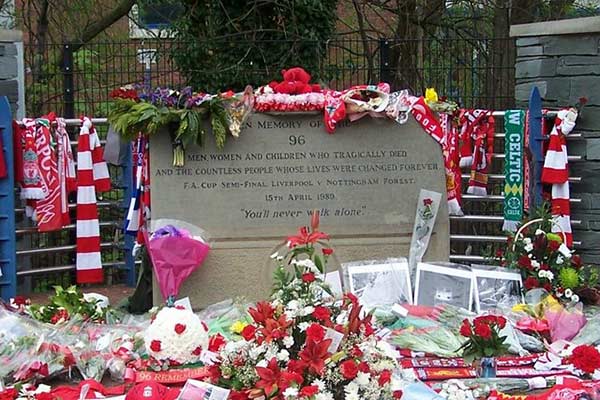
The Hillsborough disaster was a fatal crush in the stands during the FA Cup semi-final match between Liverpool and Nottingham Forest in Hillsborough Stadium, Sheffield, England, on 15 April 1989.
The crush occurred in the two standing-only central pens in the Leppings Lane stand, allocated to Liverpool supporters. It resulted in the deaths of 96 supporters and 766 injuries, becoming one of the worst disasters in British sporting history.
Shortly before kick-off, in an attempt to ease overcrowding outside the stadium, chief superintendent David Duckenfield ordered an exit gate to be opened, leading to an influx of supporters into the already overcrowded central pens.
In the weeks following the disaster, police fed false stories to the press suggesting that the behavior of Liverpool supporters was the root cause of the disaster.
The 1990 Taylor Report found the main cause of the disaster was a failure of control by South Yorkshire Police.
However, following the report, the Director of Public Prosecutions ruled there was no evidence to justify the prosecution of any individuals or institutions.
In 1991, the first coroner’s inquests ruled all the deaths to be accidental. Families strongly rejected these findings and fought to have the matter re-opened, despite being turned down for a new inquiry in 1997 and failing with private prosecutions in 2000.
In 2012, a Hillsborough Independent Panel confirmed the Taylor Report’s 1990 criticisms, revealed new details about the extent of police efforts to shift blame onto fans, and the error of the first coroner’s inquests.
The panel’s report saw the previous findings of accidental death being quashed.
In 2016, the second coroner’s inquests ruled that supporters were unlawfully killed due to grossly negligent failures by police and ambulance services to fulfill their duty of care to the supporters.
In June 2017, six people were charged with various offences including manslaughter by gross negligence, and perverting the course of justice.
The disaster led to a number of safety improvements in English football grounds, notably the elimination of fenced standing terraces in the top two tiers of English football, with all-seater stadiums replacing them.
5 – Presidential Hopeful Luis Carlos Galán is Assassinated Near Bogotá, Colombia
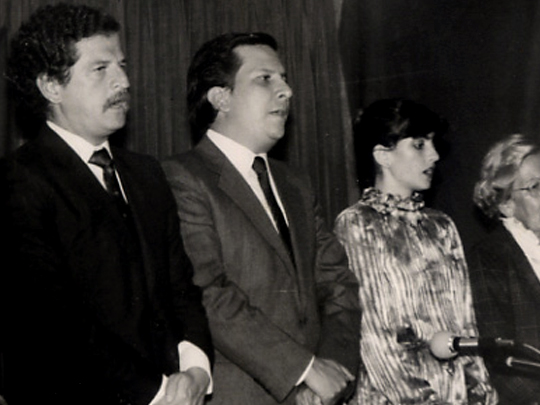
Galán was a Colombian liberal politician and journalist who was killed while running for the Presidency of Colombia in 1989.
In 1979, Galán helped found the political movement of New Liberalism, within the Liberal Party. After divisions in the party, Galan returned as the party’s nominee for the 1990 presidential election.
Galán declared himself an enemy of the drug cartels, with the main one being the Medellin Cartel led by Pablo Escobar, and the cartel’s influence in Colombian politics.
In 1982, Escobar, in his bid to become a member of the Colombian House of Representatives, failed to become a member of the New Liberalism Movement following a public rejection by Galán.
Galán denounced Pablo Escobar and supported an extradition treaty with the United States, which was against the wishes of Colombian cartels who feared extradition to the U.S.
On 18 August 1989, after receiving several death threats, Galán was killed by drug cartel hitmen during a campaign rally in the town of Soacha, near Bogotá.
At the time of his death, Galan had a comfortable lead in the polls for the forthcoming 1990 presidential election with 60 percent favorability ratings.
The investigation into his assassination remains unsolved.
6 – The Romanian Revolution
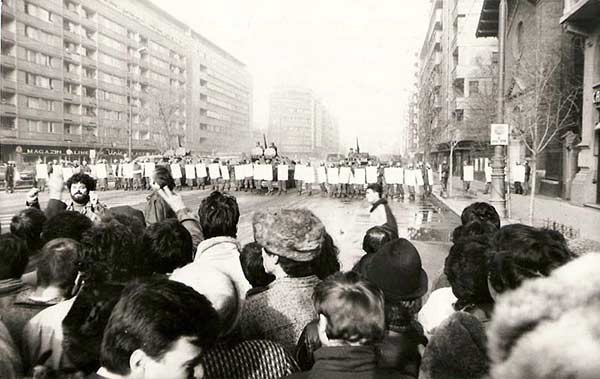
The Romanian Revolution was a period of violent civil unrest in December 1989, culminating in the execution of dictator Nicolae Ceaușescu and his wife Elena, ending 42 years of Communist rule in Romania.
The Revolution started in the city of Timișoara when a Hungarian minority publicly protested attempts by the government to evict a Hungarian Reformed church pastor. Protests soon spread throughout the country,
Romanians, buoyed by successful revolutions in other Eastern Bloc countries, sought revolution and a change in government. Even the Securitate, one of the largest secret police in the Eastern Bloc, proved powerless in stopping the looming revolt.
The social and economic malaise had been present in socialist Romania for quite some time, especially during the austerity years of the 1980s.
The austerity measures were designed in part by Ceaușescu to repay foreign debts.
On 21 December, Ceaușescu addressed a rally of 100,000 people, broadcast to millions of Romanians on state television.
However, he misread the mood of the crowd and rioting broke out before censors could cut the live feed and replace it with Communist propaganda.
The next week saw rioting and largescale violence spread across the country, leading to the Romanian Dictator fleeing Bucharest on 22 December with his wife and Deputy Prime Minister, Elena.
They were captured in Târgoviște, and tried by a military tribunal on charges of genocide, damage to the national economy and abuse of power to execute military actions against the Romanian people.
The couple was convicted on all charges, sentenced to death, and executed on Christmas Day 1989. To this day, they are the last people to be condemned to death and executed in Romania.
7 – Military Coup Overthrows Paraguayan Dictator Alfredo Stroessner
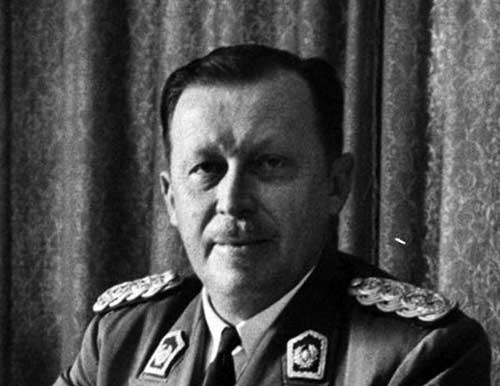
The 1989 Paraguayan coup d’état took place on 2–3 February 1989 in Asunción, Paraguay, led by General Andrés Rodríguez against the regime of long-time leader Alfredo Stroessner.
Stroessner had been an army general and veteran of the Paraguayan Civil War and came to power after a coup d’état in 1954.
As president he declared a “state of siege”, instituting laws and reforms which gave him the power to suspend civil liberties.
Between 1958 and 1988, Stroessner was reelected seven times by questionably high winning margins. The United States was one of President Stroessner’s strongest supporters, due to his anti-communism stance.
Stroessner’s bloody overthrow saw between 150 to 250 soldiers killed in street fighting and was sparked by a power struggle between two competing factions in the ruling Colorado Party.
Rodríguez’s takeover spelled the end of Stroessner’s thirty-four-year long rule, leading to numerous reforms, the abolition of many draconian laws and the liberalization of Paraguay.
In the 1989 elections, Rodríguez was elected to the presidency and served in the role until 1993, dying of cancer in 1997.
Stroessner was granted asylum in Brazil, where he lived until his death in 2006.
